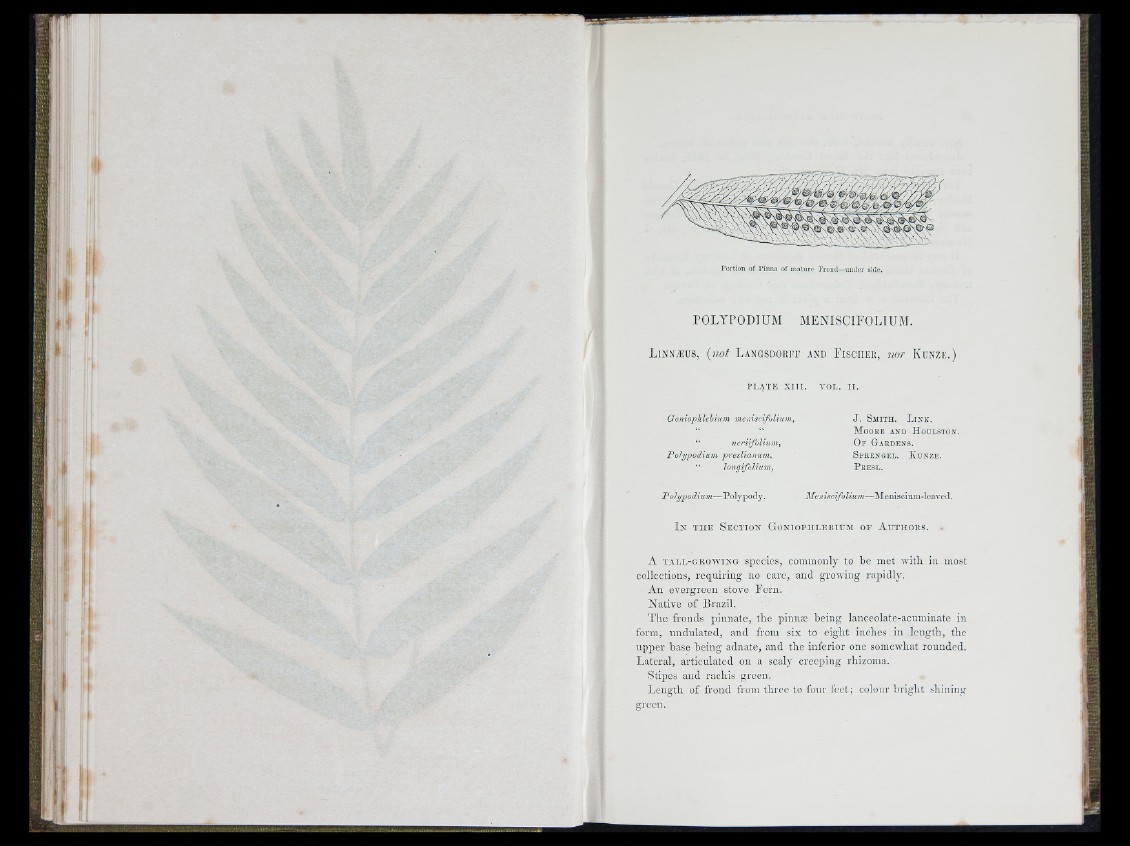
ii II
i
P o rtio n of P in n a of ina tnro ITond—u n d e r side.
POLYPODIUXI XIENISCIFOLIUM.
LiSNiEUS, ( n o t L a n g s d o r f f a n d F i s c h e r , m>r K u n z e .)
P L A T E X I I I . V O L . I I .
Gonto p h Ich iiim m e iiisn fuU u n i,
“ 'n en ifo l'm m ,
P o lijp o d iu v i p r e s lia n um ,
“ longifuUum,
J . S m i t h . L i n k .
M o o k e a n d H o u l s t o n .
O f G a e d e n s .
S p e e n s e l . K u n z e .
P e e s l .
P o ly p o d ium — P o l y p o d y . M e iiis d fo llu n i— Alenis cium- leaved.
I x T H E S e c t i o n G o x i o r i i L E i s i x iM of A u t h o r s . •
A TALL-GROWING spccics, conimoiily to be met with in most
collections, Tcquiring no care, and growing rap id h '.
An evergreen stove Pern .
Native of Brazil.
The fronds p innate, the pinnæ being lanceolate-acuminate in
form, u n dulated, and from six to eiglit inches in len g th , the
up p e r base being adnate, and the inferior one somewhat rounded,
l.a tc ra l, articulated on a scaly creeping rhizoma.
Stipes and rachis green.
I.ength of frond from three to four feet ; colour b rig h t shining
green.